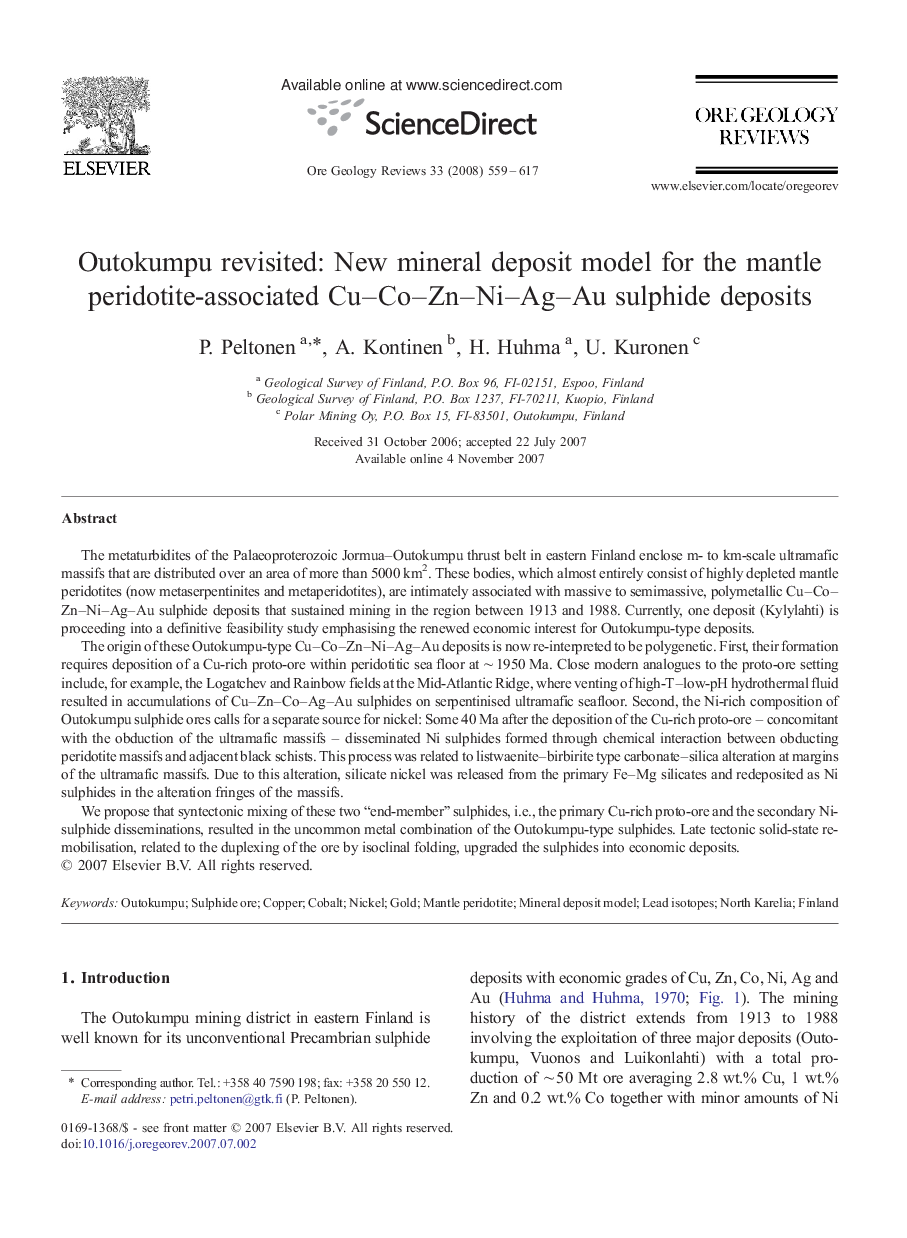| Article ID | Journal | Published Year | Pages | File Type |
|---|---|---|---|---|
| 4698037 | Ore Geology Reviews | 2008 | 59 Pages |
The metaturbidites of the Palaeoproterozoic Jormua–Outokumpu thrust belt in eastern Finland enclose m- to km-scale ultramafic massifs that are distributed over an area of more than 5000 km2. These bodies, which almost entirely consist of highly depleted mantle peridotites (now metaserpentinites and metaperidotites), are intimately associated with massive to semimassive, polymetallic Cu–Co–Zn–Ni–Ag–Au sulphide deposits that sustained mining in the region between 1913 and 1988. Currently, one deposit (Kylylahti) is proceeding into a definitive feasibility study emphasising the renewed economic interest for Outokumpu-type deposits.The origin of these Outokumpu-type Cu–Co–Zn–Ni–Ag–Au deposits is now re-interpreted to be polygenetic. First, their formation requires deposition of a Cu-rich proto-ore within peridotitic sea floor at ∼ 1950 Ma. Close modern analogues to the proto-ore setting include, for example, the Logatchev and Rainbow fields at the Mid-Atlantic Ridge, where venting of high-T–low-pH hydrothermal fluid resulted in accumulations of Cu–Zn–Co–Ag–Au sulphides on serpentinised ultramafic seafloor. Second, the Ni-rich composition of Outokumpu sulphide ores calls for a separate source for nickel: Some 40 Ma after the deposition of the Cu-rich proto-ore – concomitant with the obduction of the ultramafic massifs – disseminated Ni sulphides formed through chemical interaction between obducting peridotite massifs and adjacent black schists. This process was related to listwaenite–birbirite type carbonate–silica alteration at margins of the ultramafic massifs. Due to this alteration, silicate nickel was released from the primary Fe–Mg silicates and redeposited as Ni sulphides in the alteration fringes of the massifs.We propose that syntectonic mixing of these two “end-member” sulphides, i.e., the primary Cu-rich proto-ore and the secondary Ni-sulphide disseminations, resulted in the uncommon metal combination of the Outokumpu-type sulphides. Late tectonic solid-state re-mobilisation, related to the duplexing of the ore by isoclinal folding, upgraded the sulphides into economic deposits.
